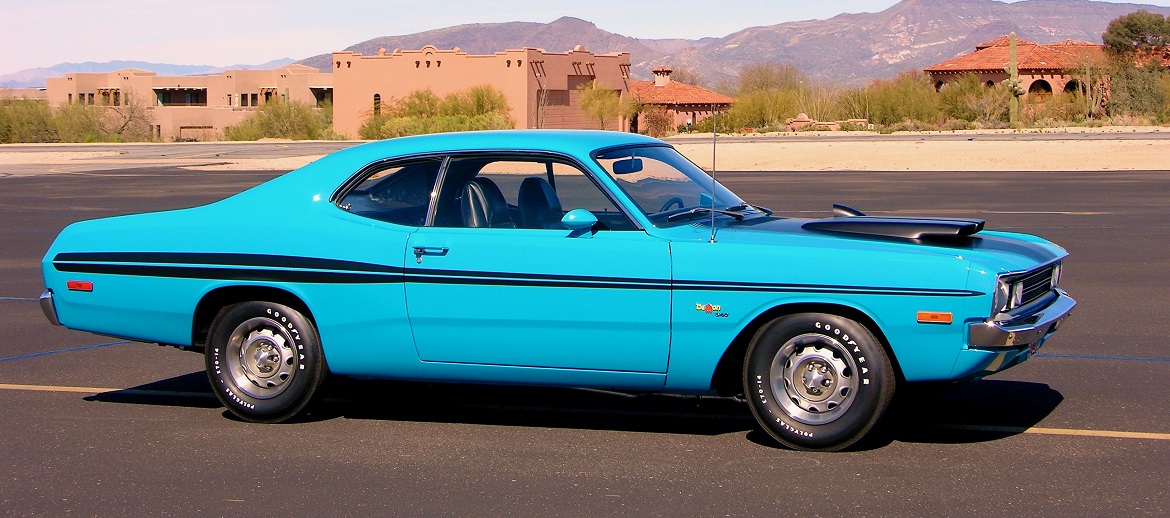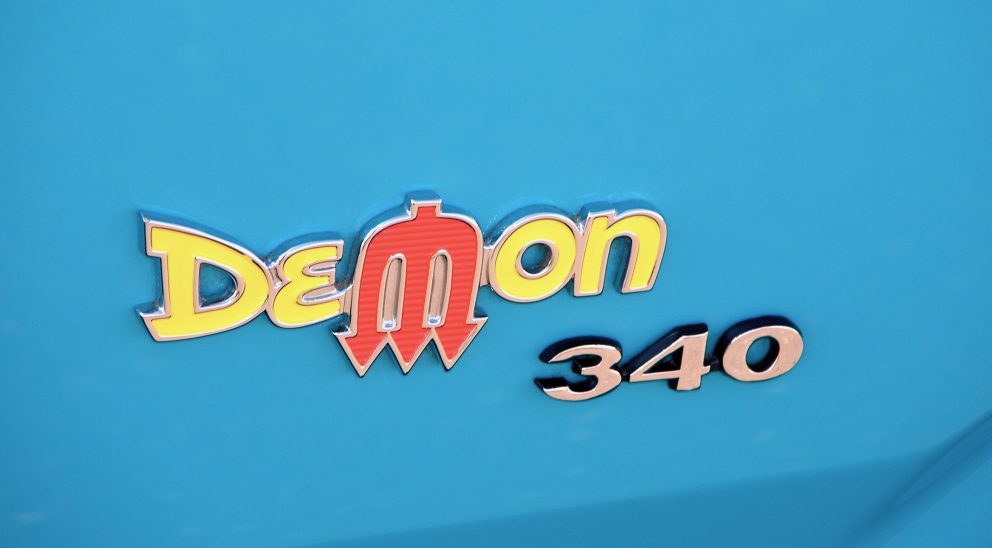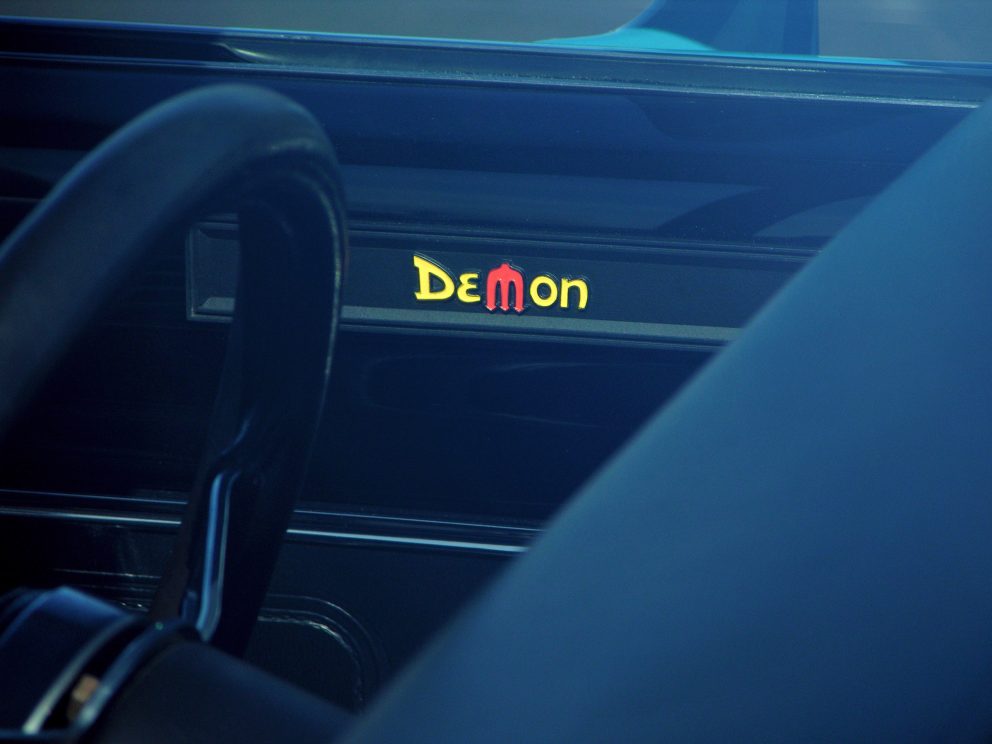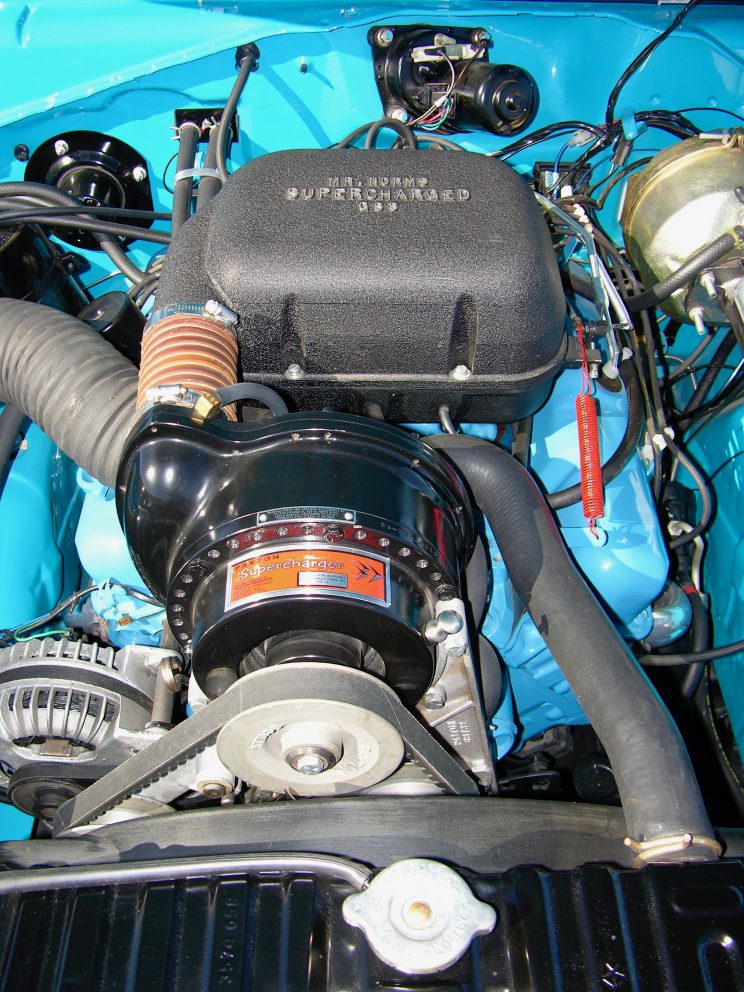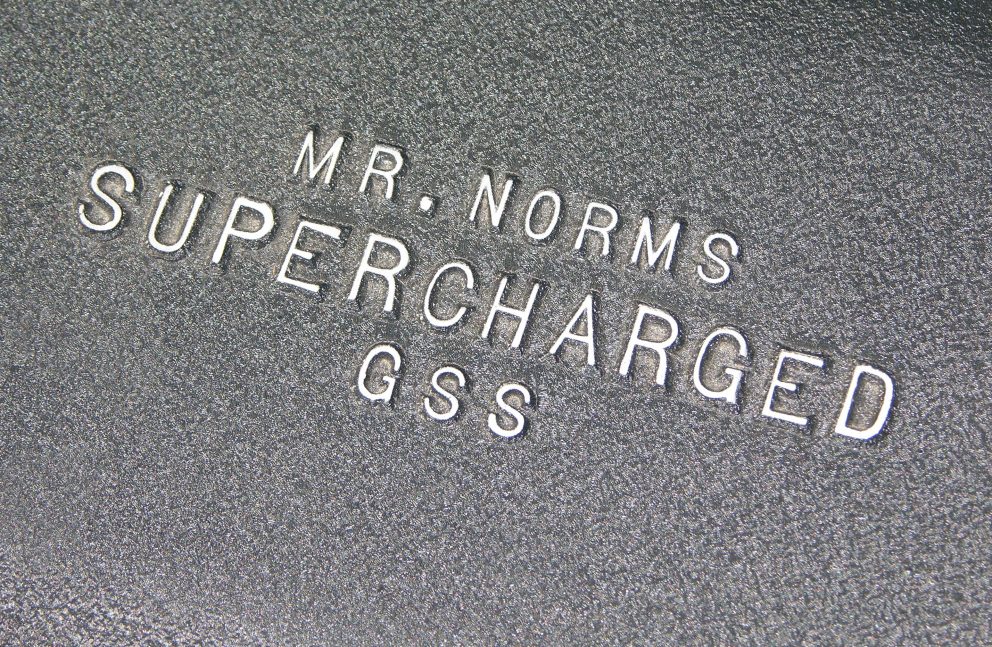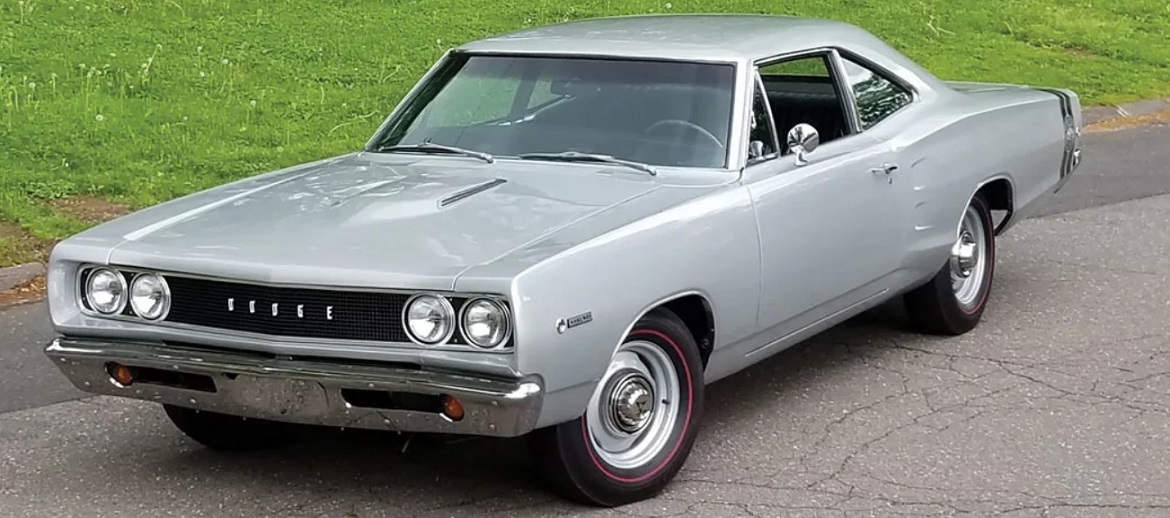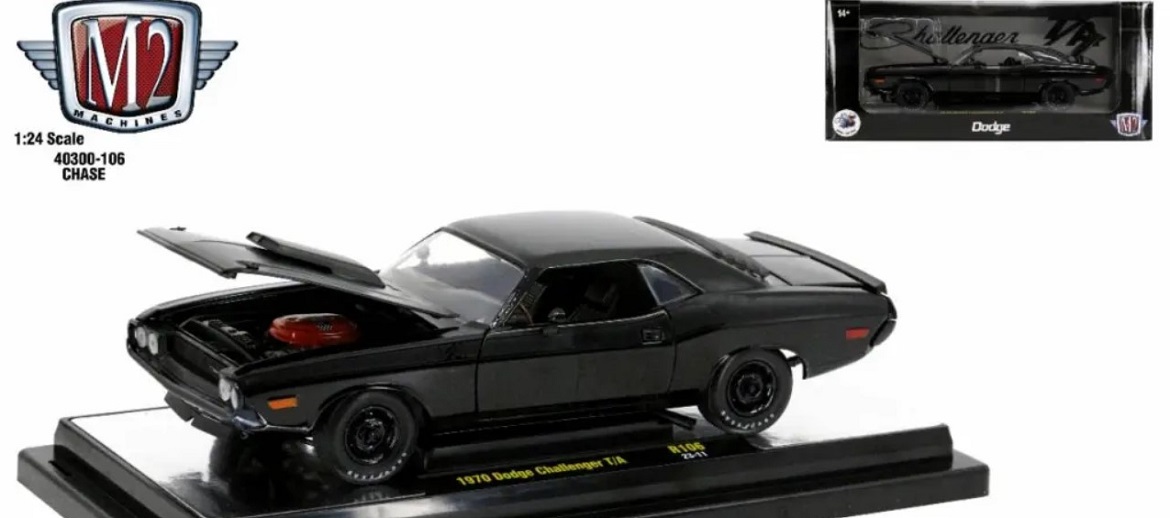GSS Supercharged SRT® Demon 340
2 years ago Heritage Video
— 360 HORSEPOWER WITH 8.5:1 COMPRESSION RATIO
— 13-SECOND QUARTER-MILE TIMES
— TWIN-SNORKEL HOOD SCOOP / FACTORY PETTY BLUE PAINT
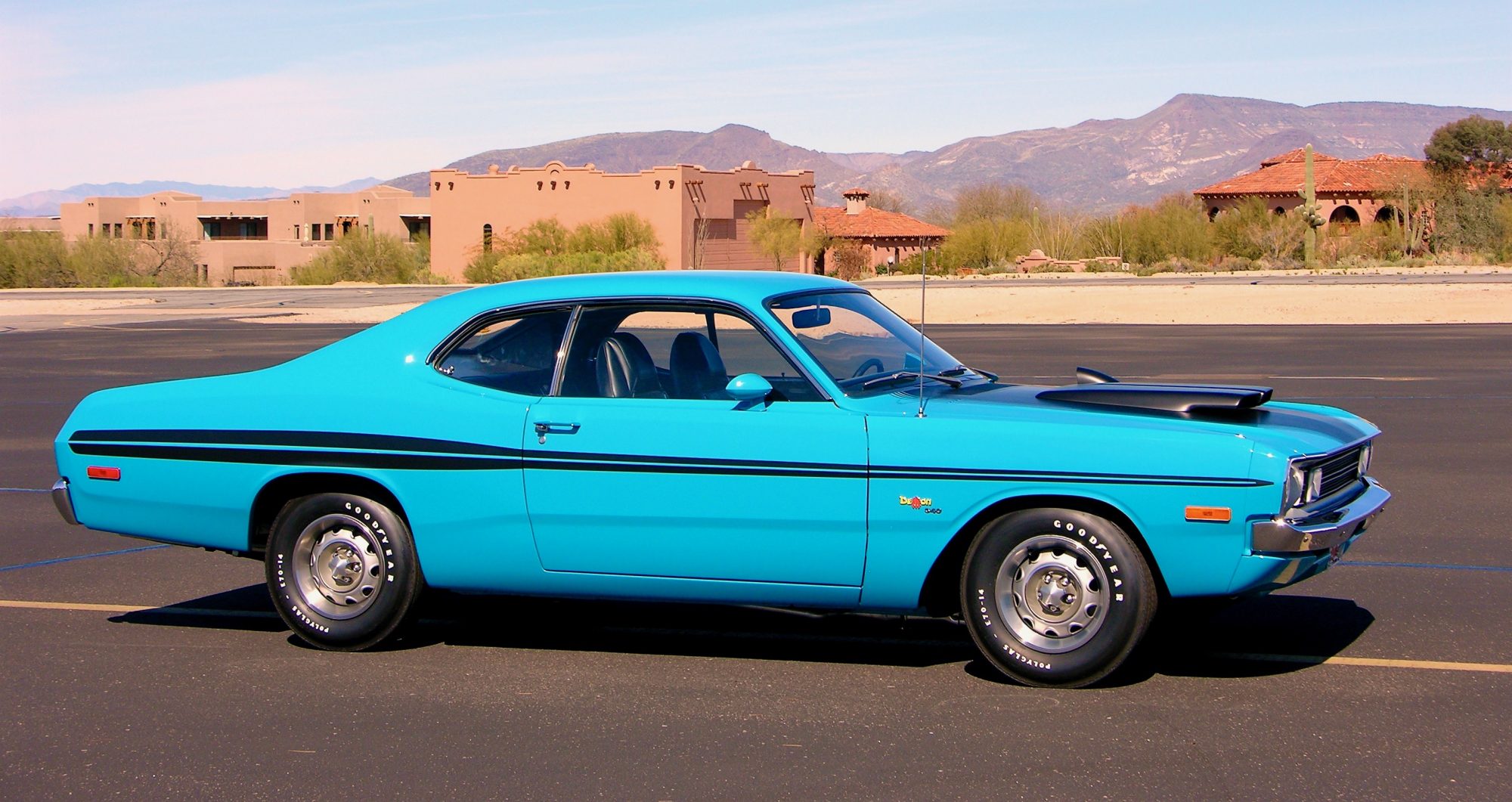
Radio was a great way of selling cars when Grand-Spaulding Dodge in Chicago was in their heyday. The dealership ran fast-paced radio spots on the powerful “WLS” Chicago-based AM radio station (that, at sundown, could be heard all over the country because of their 50,000-watt mega-blowtorch signal). Norm Kraus, AKA “Mr. Norm”, was highly visible and was called in the car world at the time “The High-Performance Car King!” National advertising in car enthusiast publications also took place, plus Norm ran a nitro Funny Car all over the country.
By the time the 1972 model year rolled around, the automotive scene was changing against high-performance, gone was the 426 HEMI® engine option and it was the last year for the 440 Six-Pack engine. The 340 for 1972 saw a reduction on compression ratio from 10.5:1 (1971) to 8.5:1.
PAXTON CENTRIFUGAL SUPERCHARGER
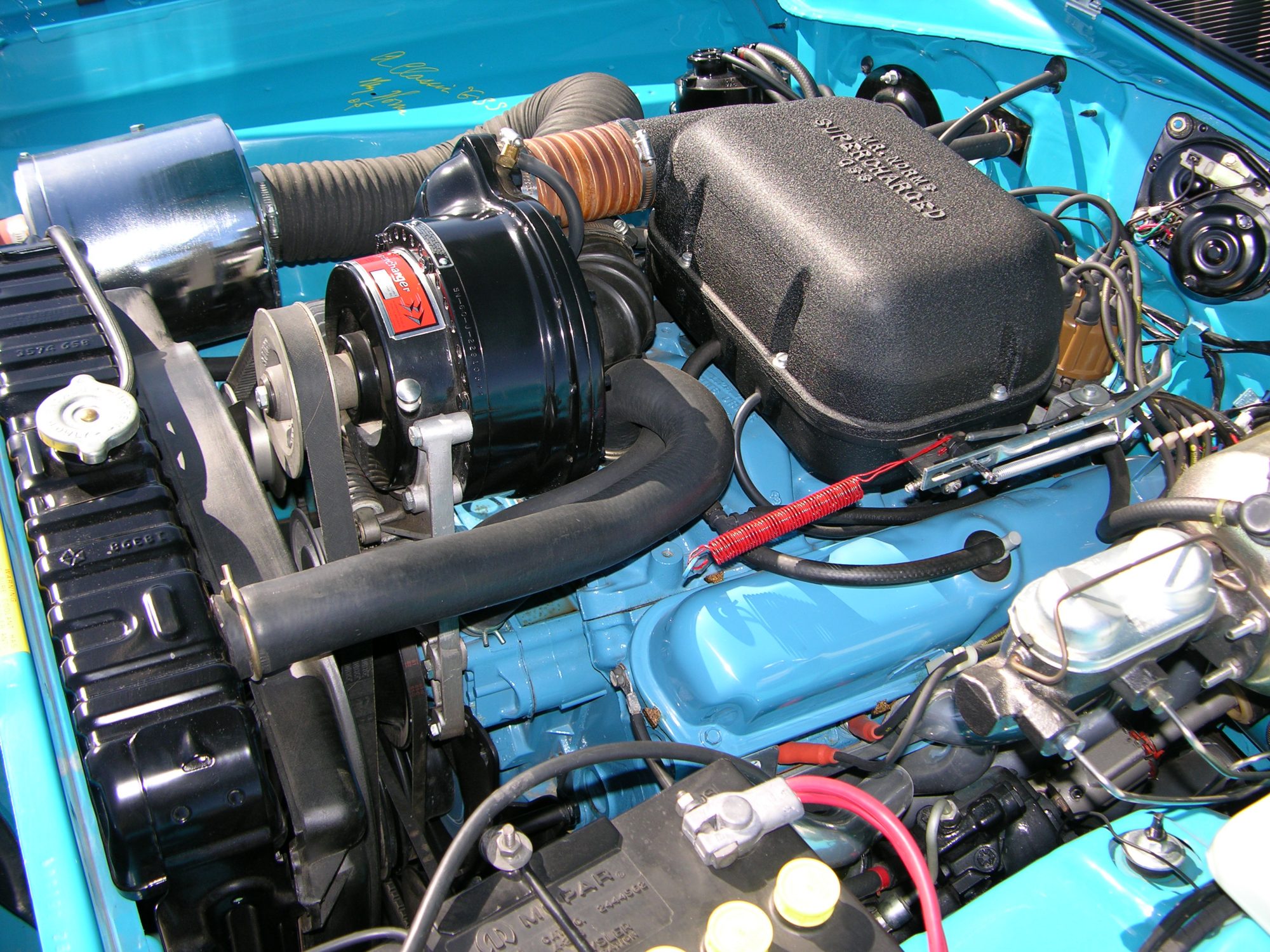
It was a walk through the SEMA (Specialty Equipment Market Association) Show that prompted Norm to get the idea of adding supercharged power to the 1972 Demon 340, creating another GSS high-performance car, and one that would actually take advantage of this lowered compression ratio of the 340. A deal was worked out with Joe Granatelli at Paxton Products, who were suppliers of belt-driven, centrifugal superchargers. This system was calibrated to work on the small block Mopar® engine, using the stock Thermo-Quad carburetor, albeit completely sealed-in with a pressure box.
Besides the actual supercharger, the ’72 340-cid engine was treated to a set of Crower aluminum valve spring retainers, modified fuel pump, fuel pressure regulator, Milodon competition oil pump, re-curved (Chrysler electronic ignition) distributor, re-jetted and re-calibrated carburetor, full-capacity hoses, oversize pulleys and a special high-capacity air intake filter (located on the passenger’s side radiator support panel). This belt-driven supercharger turned out to be the perfect response to the lower factory compression ratio for the 340-cid engine, as the new, lower 8.5:1 pistons were ideal for blower applications.
The supercharged 1972 Demon GSS cars were road tested by numerous car magazines of the day with great praise of the blown high-winding small block engine. The sounds of the supercharger package added some flavor to the car, and the editors were impressed with the low listed selling price (before any other options) of $3,695.00.
Here’s an example of the positive feedback the well-engineered little car received by the motoring press:
“It’s the sound that gets you more than anything else,” stated Joe Oldham when road testing the ’72 GSS Demon in the July 1972 issue of Hi-Performance CARS Magazine. “At first, it’s just a low whistle, but it grows into a shrill, shrieking, incessant whine the harder you mash your foot down on the pedal. It’s a sound that says one thing: supercharged!”
The GSS Demon 340 with supercharger was a one-year-only car, as by the time the 1973 model year came around, performance was drying up and the federal government was clamping down hard on emissions as well, including the modification of cars sold at dealership. Grand-Spaulding would move on to specializing in fleet sales and custom vans.
DYNOMOMETER TUNED!
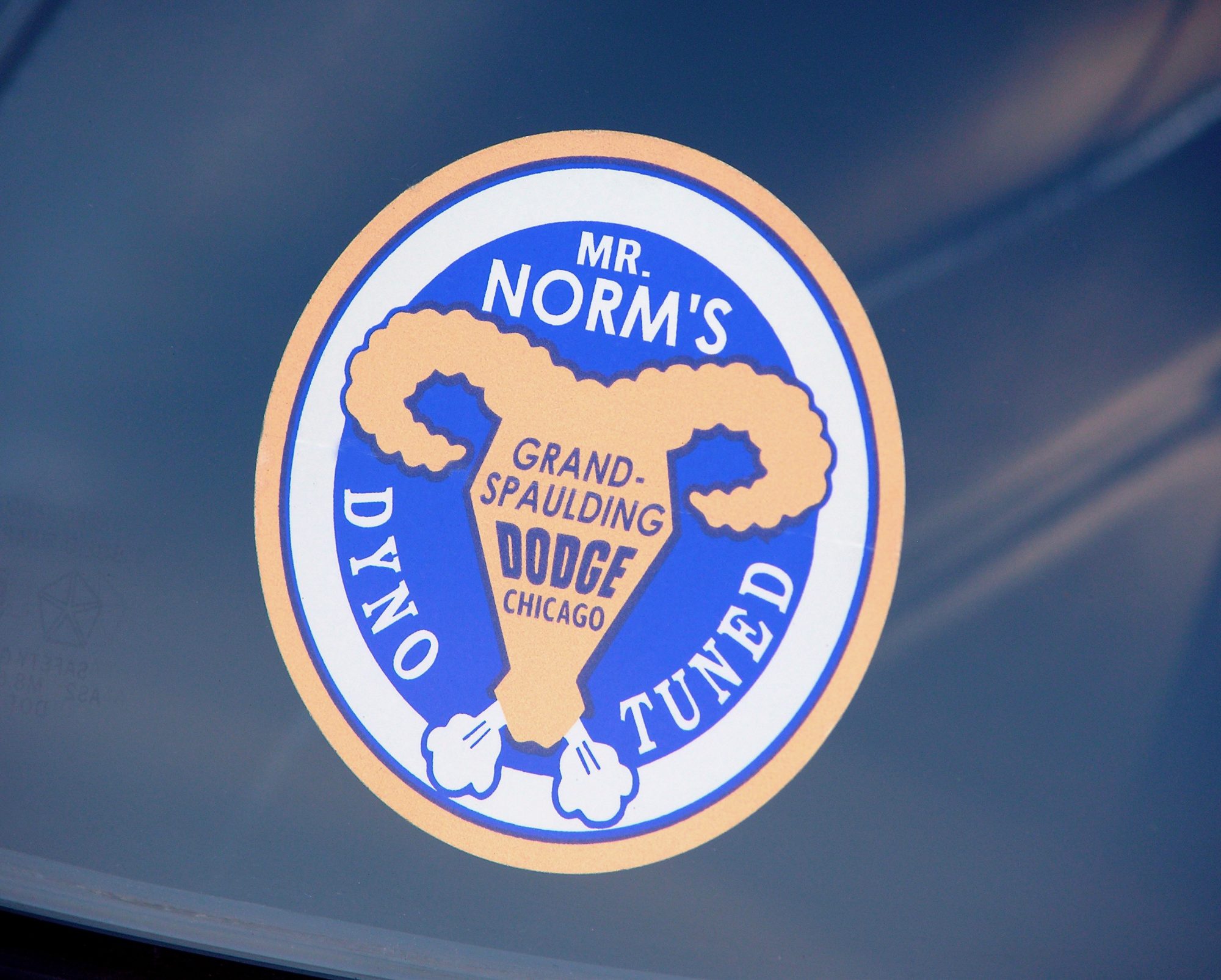
Setting up the cars was done on their in-house chassis dyno, which measured rear-wheel horsepower, allowing fine-tuning of each car sold. A Sun distributor machine was used to re-curve ignitions and the mechanics knew how to re-jet, and further tweak the carburetors for maximum performance. There was even a “Mr. Norm’s Sport Club” that offered discounts on parts and service, and a cash spiff of $75.00 for members that brought in a new-car customer. This Dodge dealer knew how to sell high-performance!
CONTROVERSIAL AT THE TIME
Fender badges were metal on the ’72 versions, and because of protests from religious groups back in the day, the car’s name was changed to “Dart Sport” for the 1973 model year. It certainly was a different era.
ROLLING STOCK
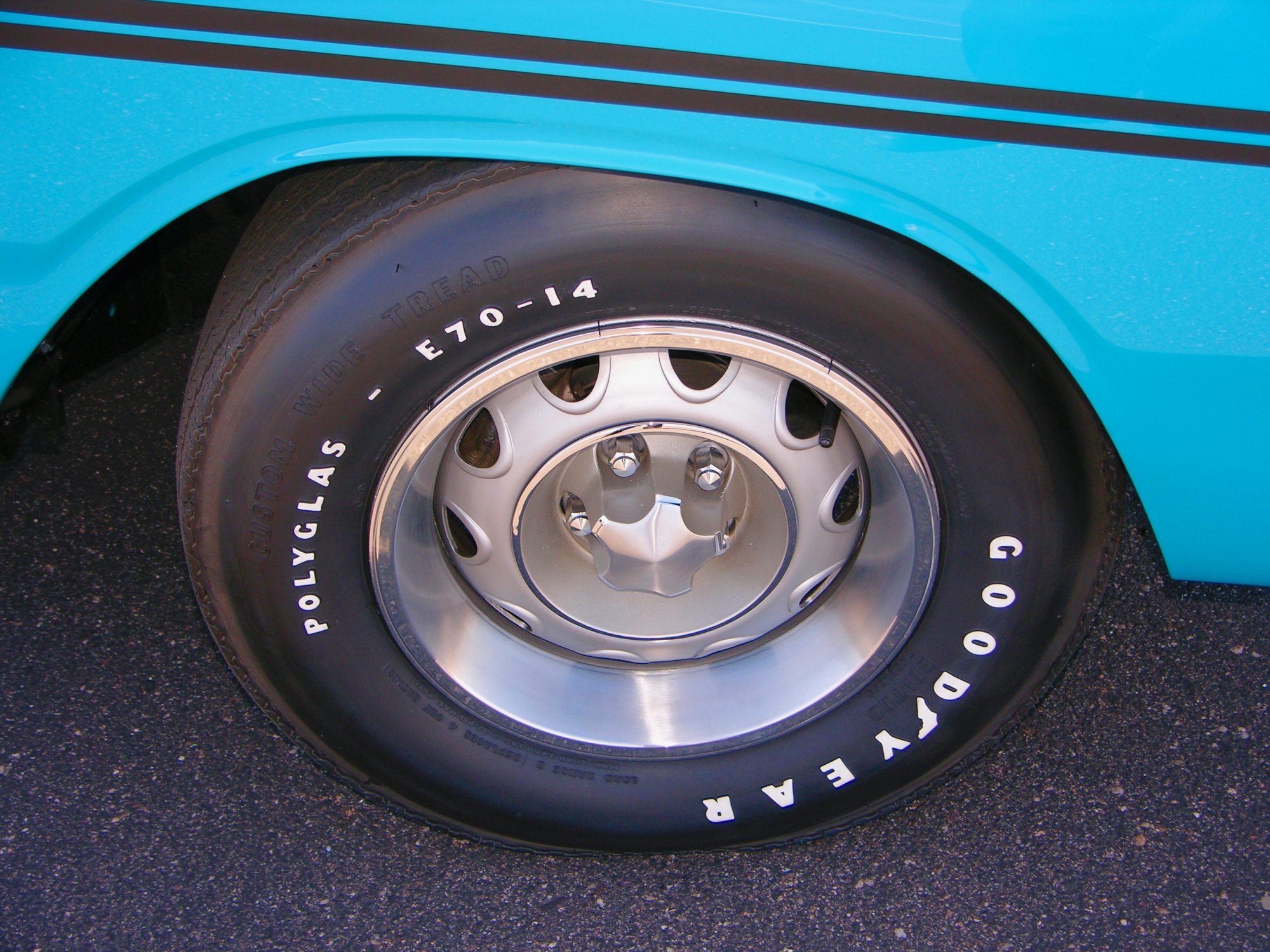
14-inch Rallye Wheels (Option Code W21) adds flash to the outside, and a set of “period” E70 Polyglas Goodyears were fitted during the restoration (as per the originals).
TUFF WHEEL
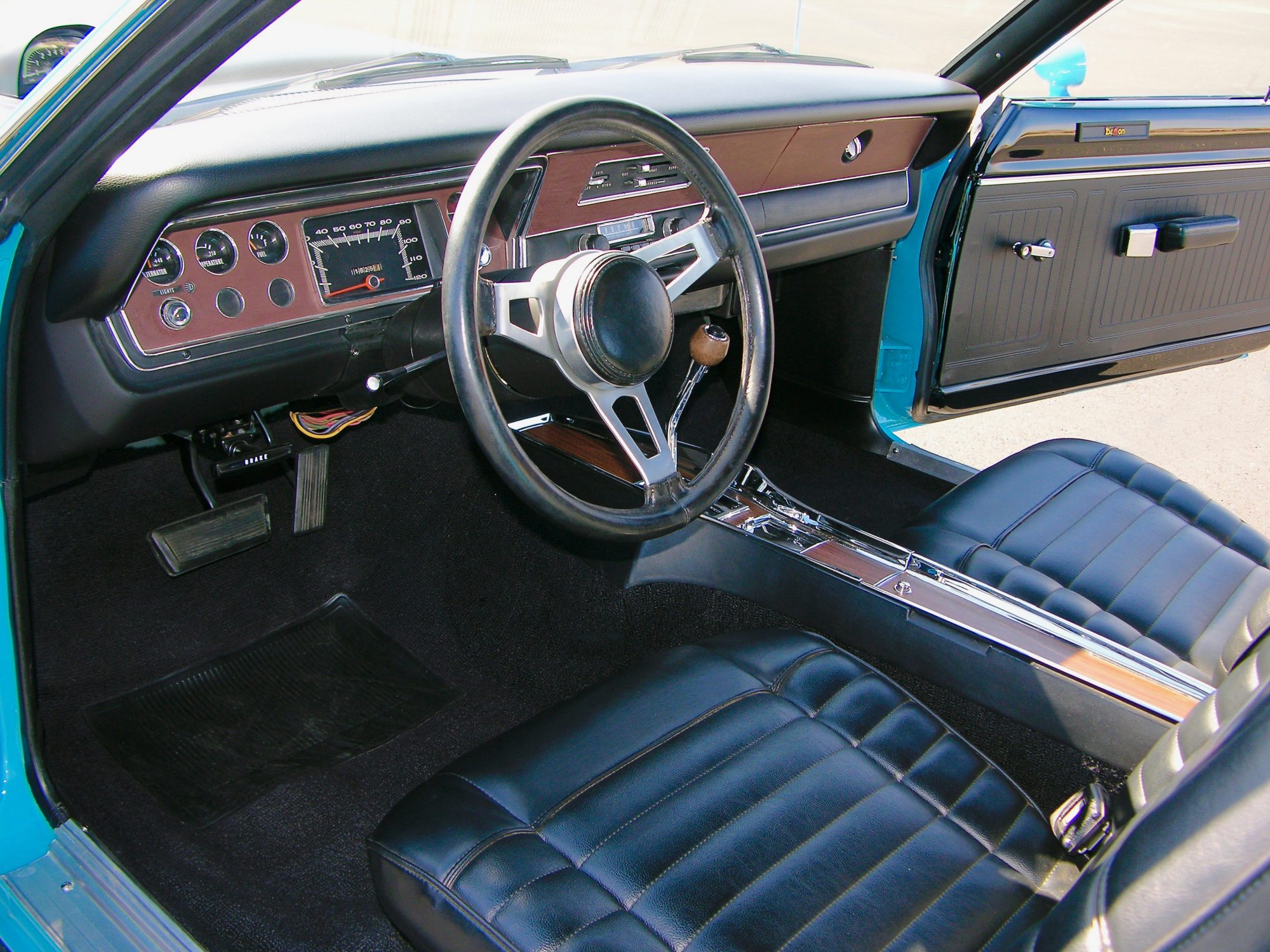
Optional “Tuff” three-spoke steering wheel (Option Code S24) and center console (Option Code C16) adds some glitter to the bucket seat-equipped Demon interior. TorqueFlite® automatic transmission was used.
MIS-MATCHED WHEEL OPENINGS
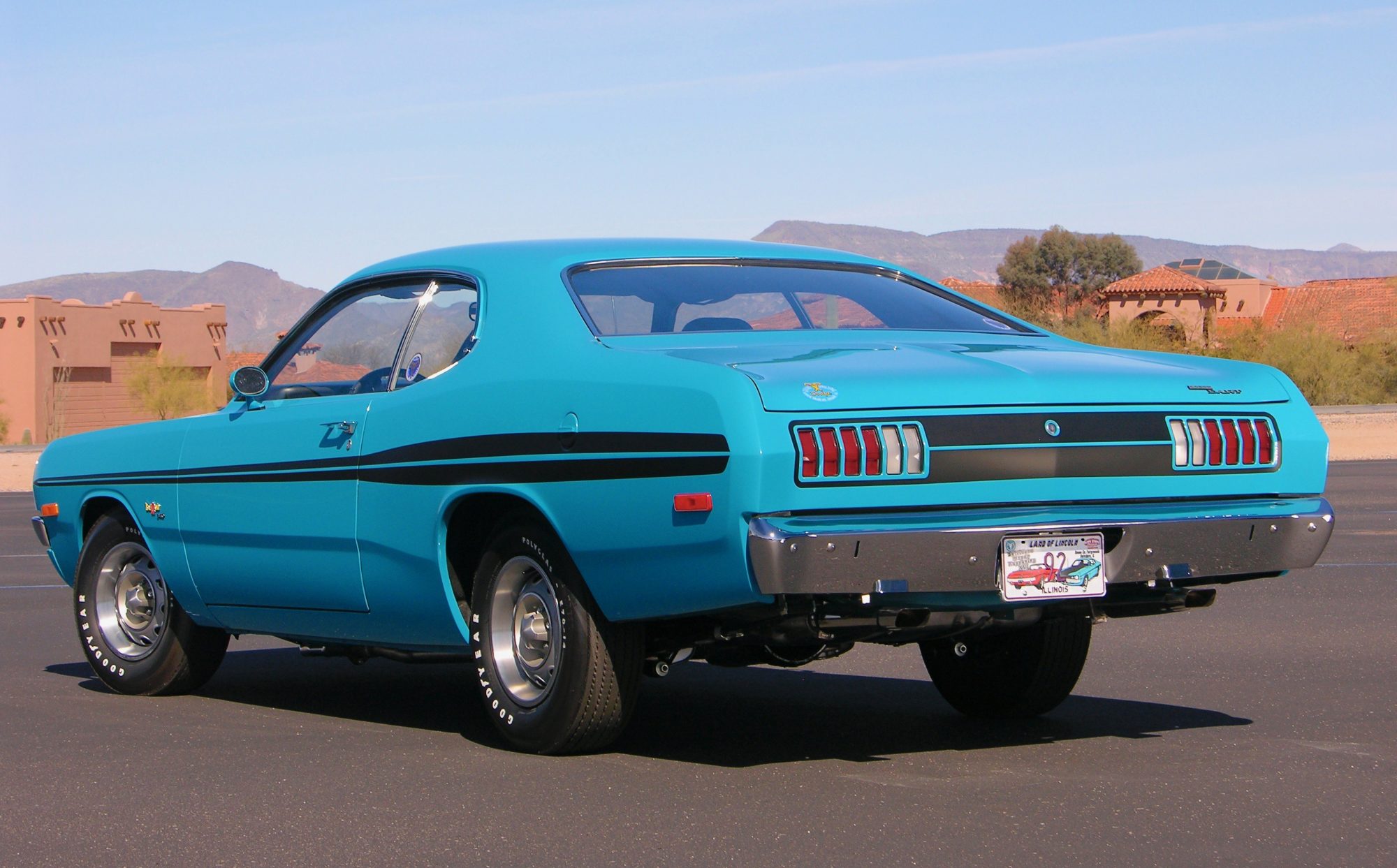
What is unusual about Dodge Demons and (from ’73 on) Dodge Dart Sports is that the body panels are mis-matched as far as the front and rear wheel opening styling, look closely at the rear lip design, it doesn’t match up with the front (which was borrowed from a Dodge Dart). The factory simply took a standard Plymouth Duster (with its unique wheel lip design) and slapped a pair of new front fenders on it; no matter, these cars were widely accepted and looking back, perhaps few even noticed it!
SEALED THERMO-QUAD
Under that big black box is the sealed Carter Thermo-Quad 4-bbl carburetor (850-cfm), early GSS cars had some problems with floats crushing (because of the blower pressure), but the situation was quickly resolved with the use of hard epoxy floats.
MAGNETIC IMPULSE SPARK
The Chrysler magnetic impulse electronic ignition debuted on the 1972 340-cid engine as standard equipment. The use of a new distributor (featuring a permanent magnet, pick-up coil, pole piece and reluctor, plus this control box), and the use of a dual ballast resistor, completely eliminated the contact points, plus provided brighter spark.
REV LIMITER
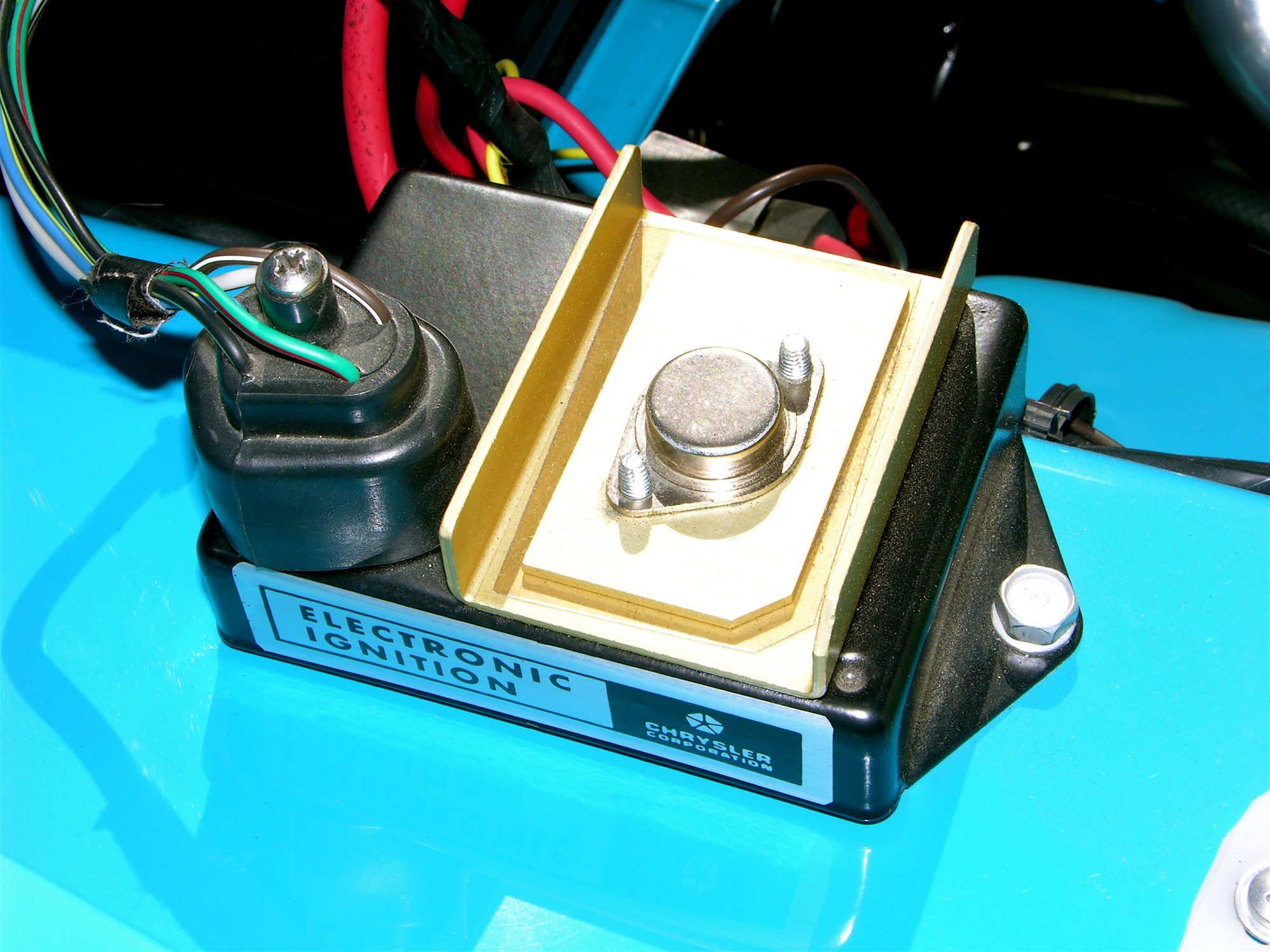
Autometer Rev-Control was part of this car’s original history and during the restoration a search was done and a near-perfect one was located … no detail was overlooked on this project!
KEEPING TRACK OF THE BLOWN 340
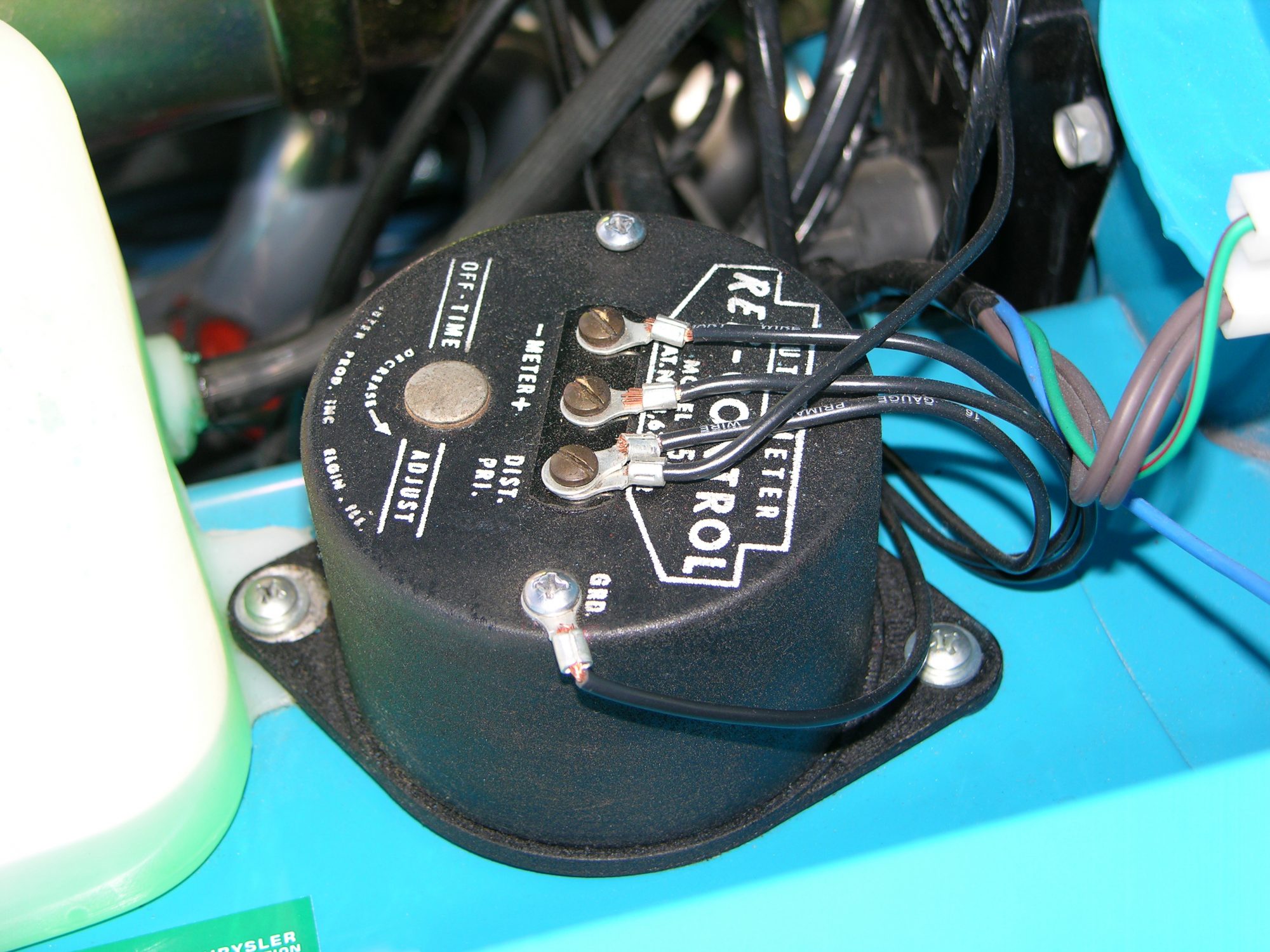
Paxton Products, located in Santa Monica, California, supplied these gauges to let drivers know what was happening under the hood of their GSS Demon 340 cars: Vacuum Pressure and Fuel Pressure gauges.
THE CAR KEPT PERFORMANCE ALIVE FOR 1972
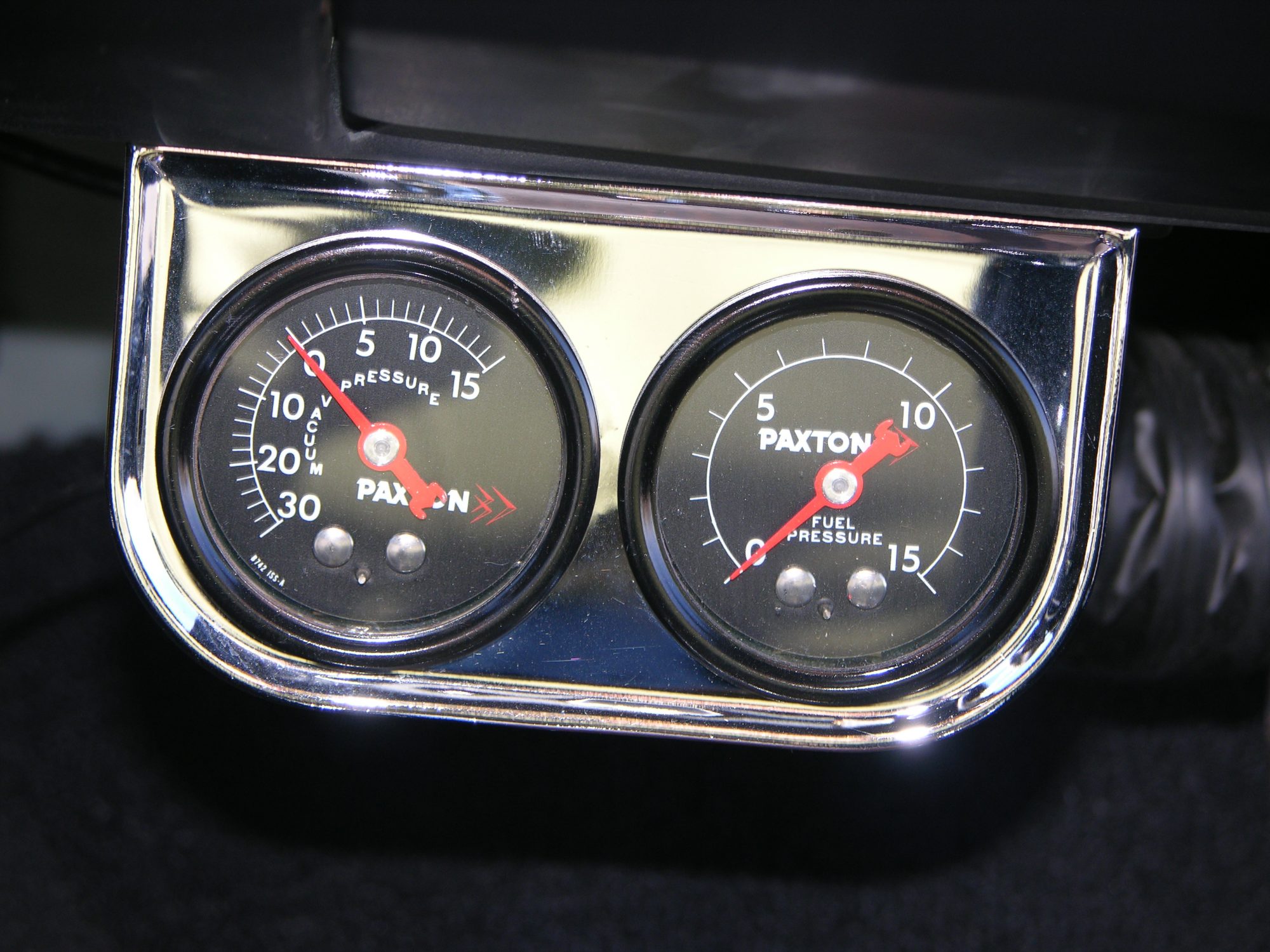
Thanks to some quick thinking from Norm Kraus, Grand-Spaulding Dodge was able to offer an exciting high-performance “GSS” version of the Demon 340 for the 1972 model year, and this example being the best preserved one on the planet.
VIN TELLS THE STORY
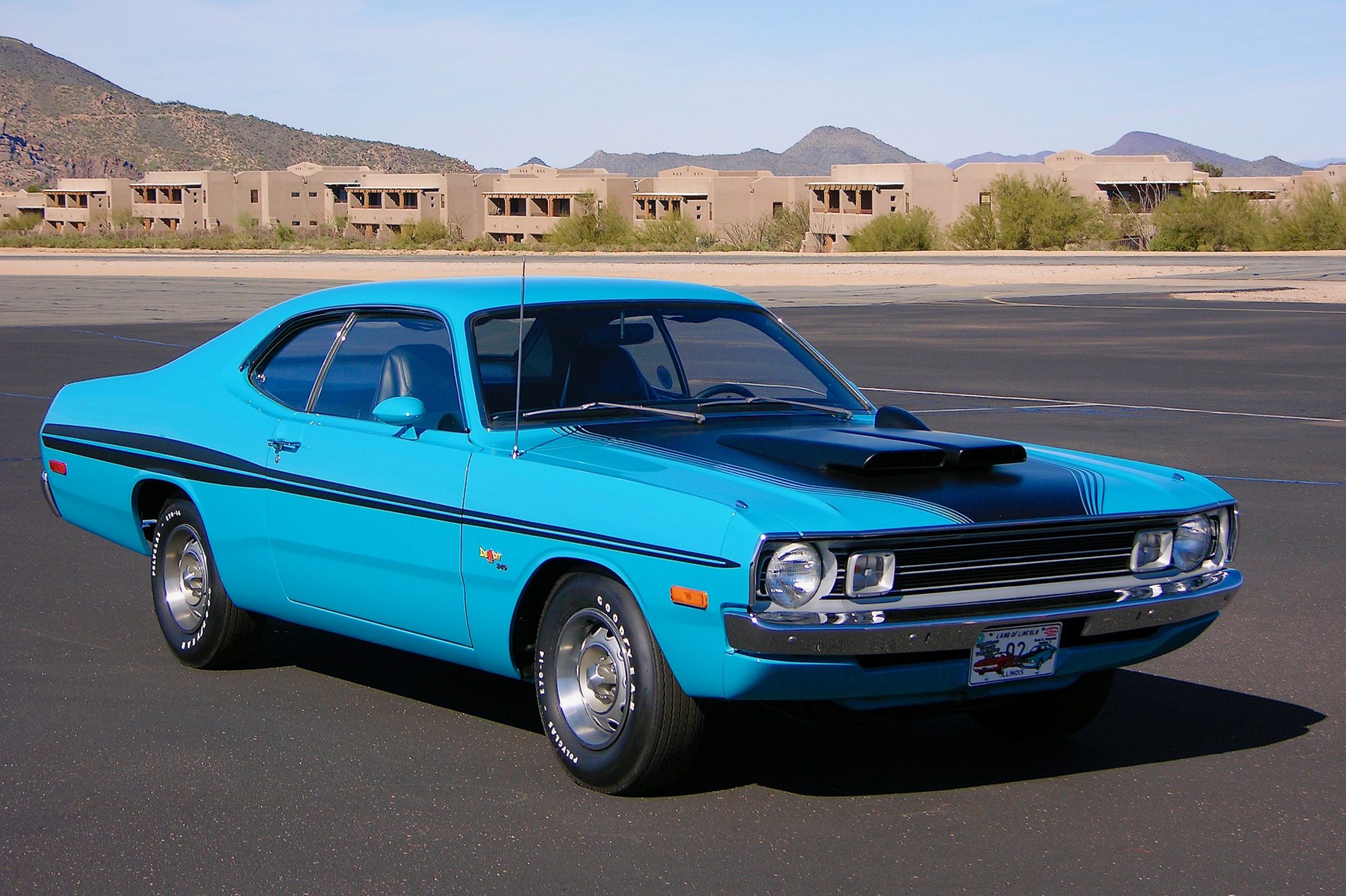
The fifth digit on the vehicle identification number, “H”, denotes 340-cid V8 1-4BBL powerplant.
REVISED GRILLE FOR ’72
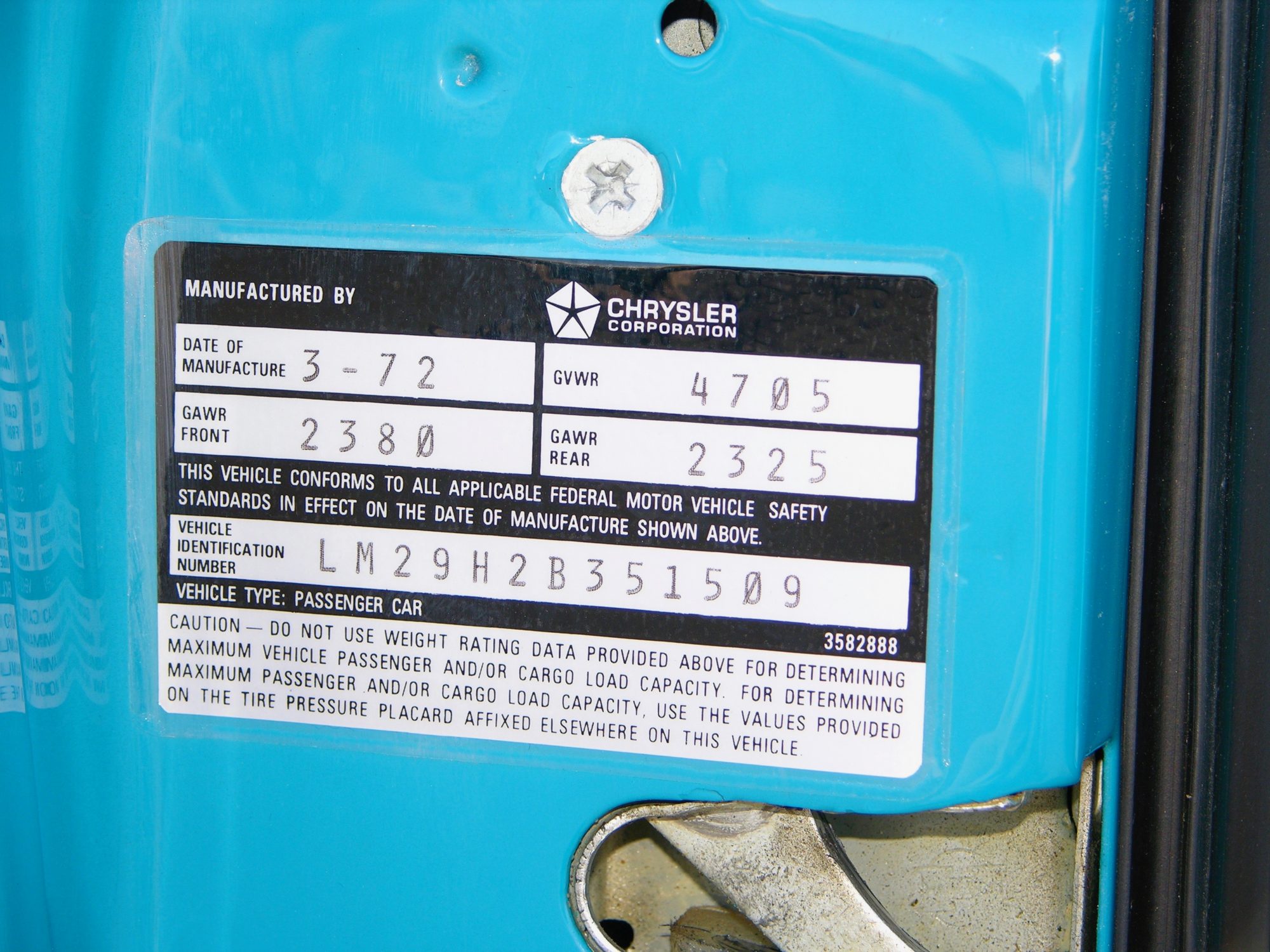
A new grille highlighted the visual changes for the 1972 Dodge Demon. Option Code V21 Performance Hood Paint and Twin Snorkel Scoop gives this car a racy appearance to be sure. Dealer-installed hood-mounted tachometer also adds a performance look.
UNIQUE TAIL LIGHTS FOR DODGE A-BODY
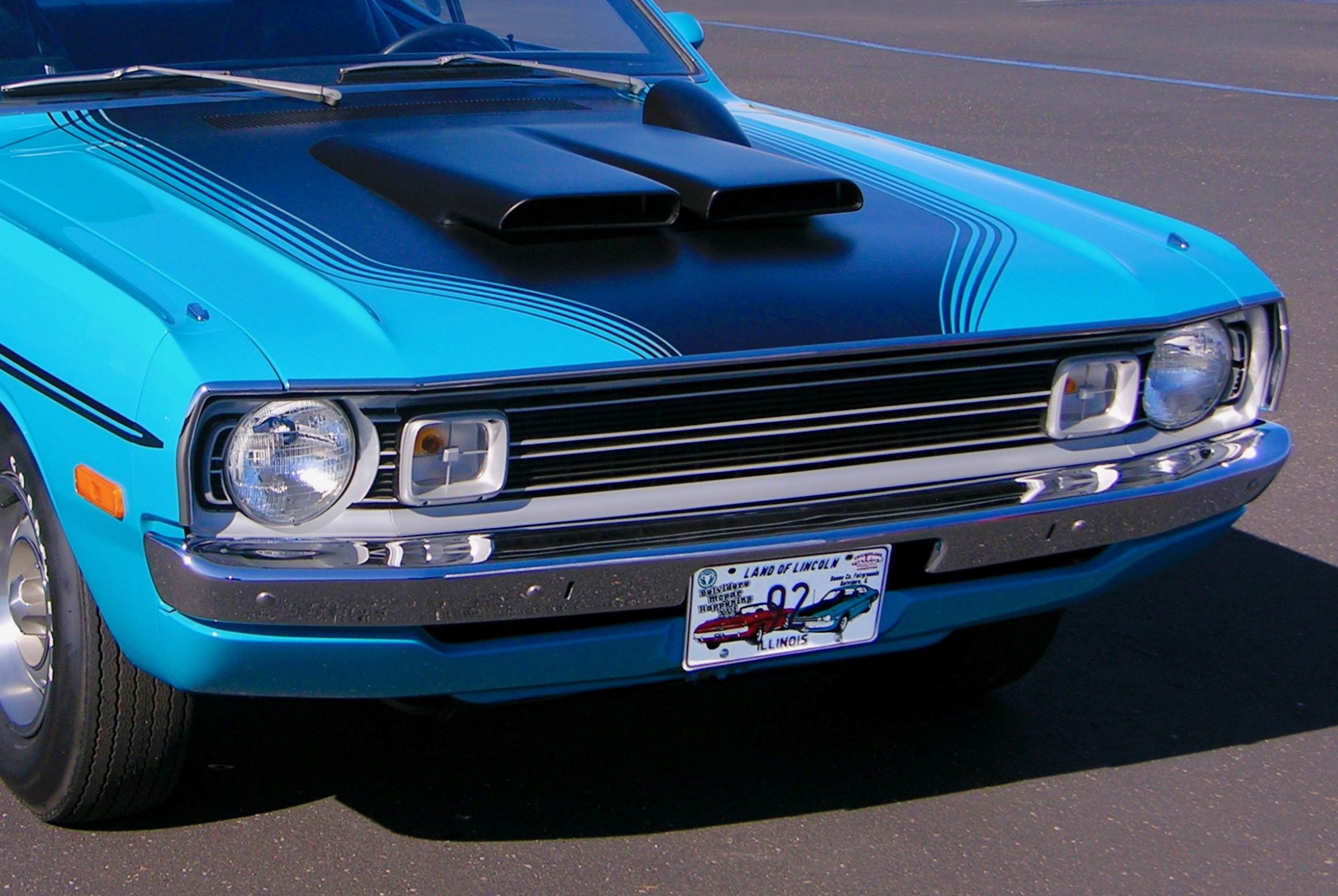
A-Body folklore has it that originally these vertical tail lights were really designed for a re-modeled Plymouth Duster as they seem to match the special grille used on 340s and “Twister” models; however, when Dodge Division wanted a piece of the action, the Demon received them.
The 1972 Dodge Demon is seen in this dealership training film:
Author: James Maxwell
